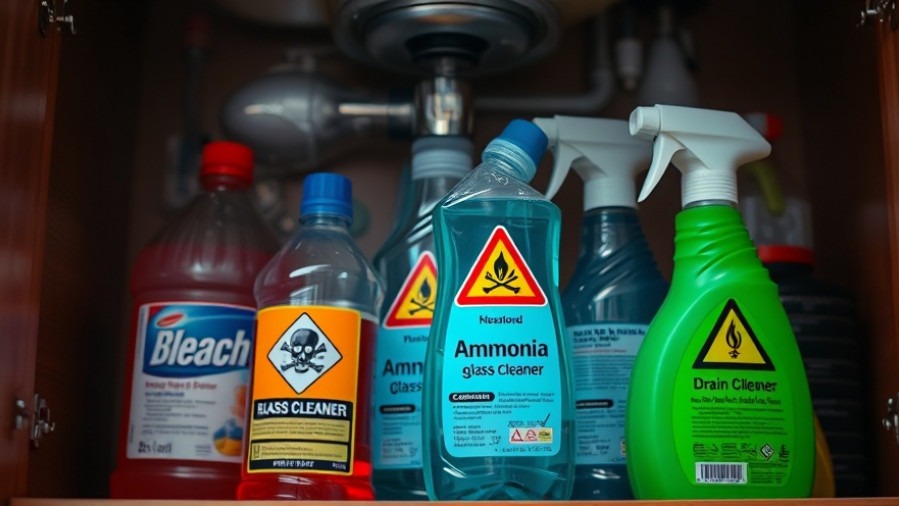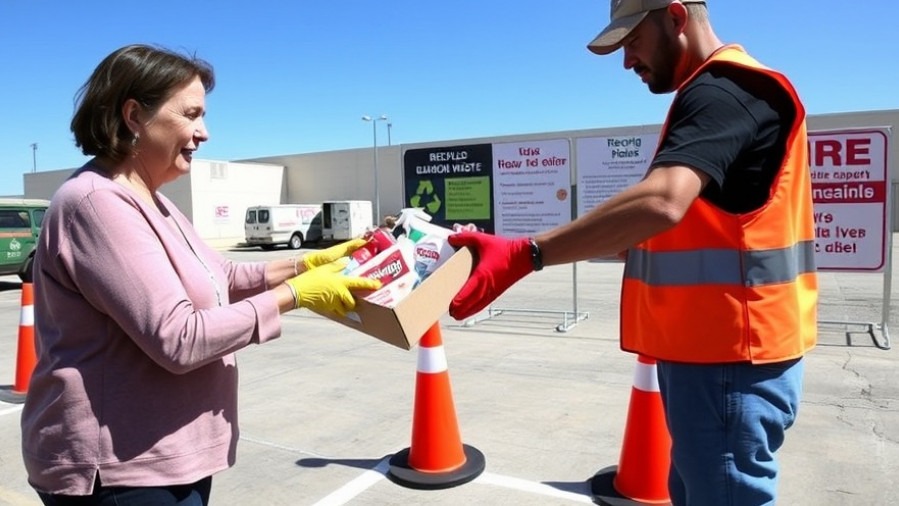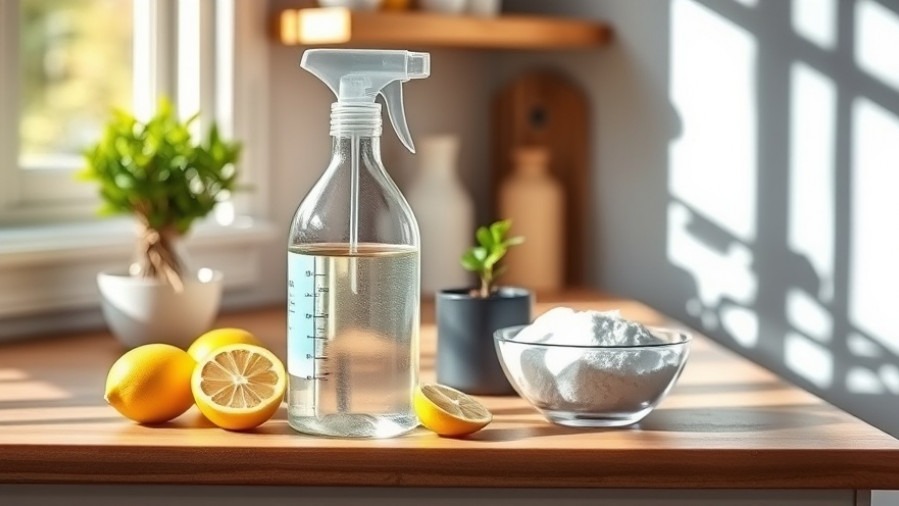
Understanding the Risks of Improper Disposal: Why It Matters More Than You Think
When most of us finish scrubbing the kitchen counter or mopping the floor, we rarely think about what happens to the leftover cleaning products we pour down the drain or toss into the trash.
But those bottles under your sink—some half-full, others collecting dust—can carry more danger than you might expect. Across the United States, an estimated 1.6 million tons of household hazardous waste end up in landfills each year.
When chemicals from cleaners, solvents, and disinfectants seep into the soil, they can contaminate water sources, harm wildlife, and even make their way back into our homes.
In Sacramento, where sustainability and environmental consciousness are part of the city’s growing culture, learning to properly dispose of cleaning products is one small but powerful step residents can take to protect their community.
Are Cleaning Products Really Hazardous Waste?
Not every cleaner under your sink is dangerous—but many contain ingredients that qualify as household hazardous waste (HHW) under the Environmental Protection Agency’s guidelines. These include products that can ignite, react, or release toxic fumes if mixed with other substances or exposed to heat.
“Oven cleaners, bleach-based disinfectants, and certain drain openers are common culprits,” explains Dr. Maria Benson, an environmental health specialist and consultant with the California Green Living Initiative.
“When disposed of improperly, these chemicals can enter waterways and interfere with the ecosystem’s balance, sometimes killing beneficial bacteria that help keep water sources clean.”
Even seemingly mild cleaners can be problematic. Antibacterial soaps with Triclosan, for instance, are now known to contribute to antibiotic resistance and environmental toxicity when poured down the drain. It’s a small act that can have large-scale consequences.

Safe Ways to Dispose of Cleaning Products
The good news is that with a little mindfulness, you can dramatically reduce your household’s hazardous waste footprint.
1. Use It Up or Pass It On If the product is still usable, finish it instead of discarding it—or donate unopened or gently used items to a local charity, shelter, or community cleaning project. Many organizations in Sacramento, including neighborhood cleanup teams, gladly accept these donations.
2. Check Labels for Disposal Instructions Product labels often include specific instructions for safe disposal. Some cleaners should never be poured down the sink, toilet, or storm drain. If the label is unclear, look up the brand’s website or call your local waste authority for clarification.
3. Take Advantage of Local Disposal Facilities Sacramento County operates Household Hazardous Waste (HHW) facilities that safely process materials like paints, cleaners, and automotive fluids. Residents can also participate in Hazardous Waste Drop-Off Days, where trained staff handle your unwanted products for free.
“Sacramento has done an excellent job in making disposal accessible,” says Jordan Klein, Environmental Program Coordinator for the Sacramento Regional Waste Authority.
“By using our local HHW collection sites, residents help prevent chemicals from polluting our rivers and groundwater. Every small effort counts toward a cleaner Sacramento.”
Local Solutions for a Safer Sacramento
From North Area Recovery Station to Kiefer Landfill, Sacramento offers multiple designated facilities where residents can safely drop off hazardous household materials. Many sites even accept items like batteries, fluorescent bulbs, and electronics alongside cleaning products.
To stay informed, residents can visit the Sacramento County Waste Management and Recycling website, which posts updates about drop-off events, recycling programs, and sustainability initiatives.
If transportation is a challenge, several community organizations coordinate neighborhood collection drives, helping older residents or those without vehicles responsibly dispose of chemicals from their homes.

Community Power: A Cleaner Future Together
Proper disposal isn’t just about following rules—it’s about protecting your neighbors, your family, and future generations. When one household takes the time to dispose of chemicals correctly, it keeps harmful substances out of waterways and soil that nourish local farms and gardens.
Dr. Benson emphasizes, “Community involvement magnifies impact. When residents spread awareness, they’re not just protecting their household; they’re safeguarding public health.”
Encouraging friends and neighbors to participate in disposal programs or hosting small “eco-education” events can help multiply that effect. Some Sacramento schools and youth organizations have even incorporated green living workshops into their programming to teach kids about recycling, composting, and hazardous waste management.
Sustainable Cleaning: Better for You and the Planet
Sustainable living starts with simple swaps. Instead of harsh chemicals, consider eco-friendly alternatives that are safe, effective, and affordable:
Vinegar and Water: A natural glass cleaner that leaves windows streak-free.
Baking Soda Paste: A gentle scrub for sinks, ovens, and tiles.
Lemon Juice: Cuts grease and leaves behind a fresh scent.
Plant-Based Cleaners: Readily available in most Sacramento markets, biodegradable formulas made with natural surfactants clean effectively without polluting water systems.
According to Earth911, practicing “precycling”—choosing products with recyclable or minimal packaging—helps reduce waste before it’s created. “Think about packaging as part of the product’s footprint,” adds Klein. “A biodegradable cleaner in a refillable bottle has far less impact than a traditional cleaner in a single-use plastic container.”
Take Action Today
It’s easy to overlook what happens after the cleaning is done—but what you do next matters. Properly disposing of household cleaning products prevents pollution, safeguards wildlife, and keeps your community’s air and water clean.
Before tossing any bottle, pause and check if it qualifies as hazardous waste. If it does, take the extra step to dispose of it properly. Sacramento offers the resources—you just need to take the initiative.
And remember: every small action contributes to a cleaner, safer city. Together, we can ensure that Sacramento remains a model for sustainability and environmental stewardship for generations to come.
Want simple ways to live greener every day? Explore Eco Living for local sustainability ideas and planet-friendly tips, then head back to Sacramento Living Well for more inspiration across our community.
---
Authored by the Sacramento Living Well Editorial Team — a publication of DSA Digital Media, dedicated to highlighting wellness, local living, and inspiring community stories throughout Greater Sacramento.
 Add Row
Add Row  Add
Add 





Write A Comment